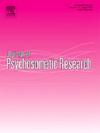长期COVID患者和持续躯体症状患者的社会经济地位与健康相关生活质量的关联:基线时两项队列研究的比较
IF 3.3
2区 医学
Q2 PSYCHIATRY
引用次数: 0
摘要
背景和目的新出现的证据表明,长COVID (LC)与低社会经济地位(SES)的其他持续性身体症状(PPS)之间存在显著关联。我们在LC患者和经历其他pps相关疾病的患者中研究了SES与健康相关生活质量(HRQOL)之间的关系,HRQOL由15D和EUROHIS-QOL-8仪器测量。方法采用15D自填问卷对影响HRQOL的临床因素和社会经济因素进行评估。对赫尔辛基大学医院的两个平行队列进行分析:赫尔辛基LC队列(n = 422; 2021-2023)和赫尔辛基Sympa队列(n = 599; 2020-2024),由PPS患者组成。此外,我们对生活质量的生物心理社会预测因素进行了交叉MAIHDA分析。结果两组在人口统计学上相似,LC组和Sympa组的女性参与者分别为70.6%和66.4%,平均年龄分别为44.8岁(SD = 11.3)和38.8岁(SD = 11.0)。根据EUROHIS-QOL-8, 34%的LC受访者和41%的Sympa受访者将他们的总体生活质量评为非常差或差(量表选项1-2 / 5)。LC组平均15D评分为0.76 (SD = 0.11), Sympa组平均15D评分为0.74 (SD = 0.11)(量表:0-1)。在基于信息标准的模型中,工作状态、合并症和高等教育程度成为关键决定因素,突出了重叠的社会和临床不利因素的累积负担。在我们的队列中没有发现显著的倍增效应。结论两组患者的HRQOL均有下降,且社会经济因素对QOL的影响高度相似。合并症、只有基础学校教育和失业与最低HRQOL评分相关。社会经济劣势的积累可能成为治疗的障碍,卫生保健专业人员应认识到这些挑战,并确保患者得到充分的支持。本文章由计算机程序翻译,如有差异,请以英文原文为准。
Associations of socioeconomic status and health-related quality of life in patients with long COVID and patients with persistent physical symptoms: A comparison of two cohort studies at baseline
Background and aim
Emerging evidence suggest a significant association between Long COVID (LC) and other persistent physical symptoms (PPS) with lower socioeconomic status (SES). We investigated the relationship between SES and health-related quality of life (HRQOL), as measured by the 15D and the EUROHIS-QOL-8 instruments, among patients with LC and those experiencing other PPS-related conditions.
Methods
Factors related to clinical and socioeconomic aspects that affect HRQOL were evaluated using 15D, a validated 15-item self-reported questionnaire. Two parallel cohorts at Helsinki University Hospital were analyzed: the Helsinki LC cohort (n = 422; 2021–2023) and the Helsinki Sympa cohort (n = 599; 2020–2024), consisting of patients with PPS. Additionally, we performed an intersectional MAIHDA analysis of biopsychosocial predictors of quality of life.
Results
The cohorts were demographically similar, with 70.6 % and 66.4 % female participants and mean ages of 44.8 years (SD = 11.3) and 38.8 years (SD = 11.0) in the LC and Sympa cohorts, respectively. By EUROHIS-QOL-8, 34 % of LC and 41 % of Sympa respondents rated their overall QOL as very bad or bad (scale options 1–2 out of 5). Mean 15D scores were 0.76 (SD = 0.11) in the LC cohort and 0.74 (SD = 0.11) in the Sympa cohort (scale: 0–1). Working status, comorbidities, and tertiary education emerged as key determinants in the information-criteria–based model, highlighting the cumulative burden of overlapping social and clinical disadvantages. No significant multiplicative effects were found within our cohorts.
Conclusions
Patients in both cohorts reported reduced HRQOL, and the influence of socioeconomic factors on QOL were highly similar. Comorbidities, only basic school education, and being out of work were associated with the lowest HRQOL scores. The accumulation of socioeconomic disadvantage may function as a barrier to treatment, and healthcare professionals should recognize these challenges and ensure that patients receive adequate support.
求助全文
通过发布文献求助,成功后即可免费获取论文全文。
去求助
来源期刊
CiteScore
7.40
自引率
6.40%
发文量
314
审稿时长
6.2 weeks
期刊介绍:
The Journal of Psychosomatic Research is a multidisciplinary research journal covering all aspects of the relationships between psychology and medicine. The scope is broad and ranges from basic human biological and psychological research to evaluations of treatment and services. Papers will normally be concerned with illness or patients rather than studies of healthy populations. Studies concerning special populations, such as the elderly and children and adolescents, are welcome. In addition to peer-reviewed original papers, the journal publishes editorials, reviews, and other papers related to the journal''s aims.

 求助内容:
求助内容: 应助结果提醒方式:
应助结果提醒方式:


